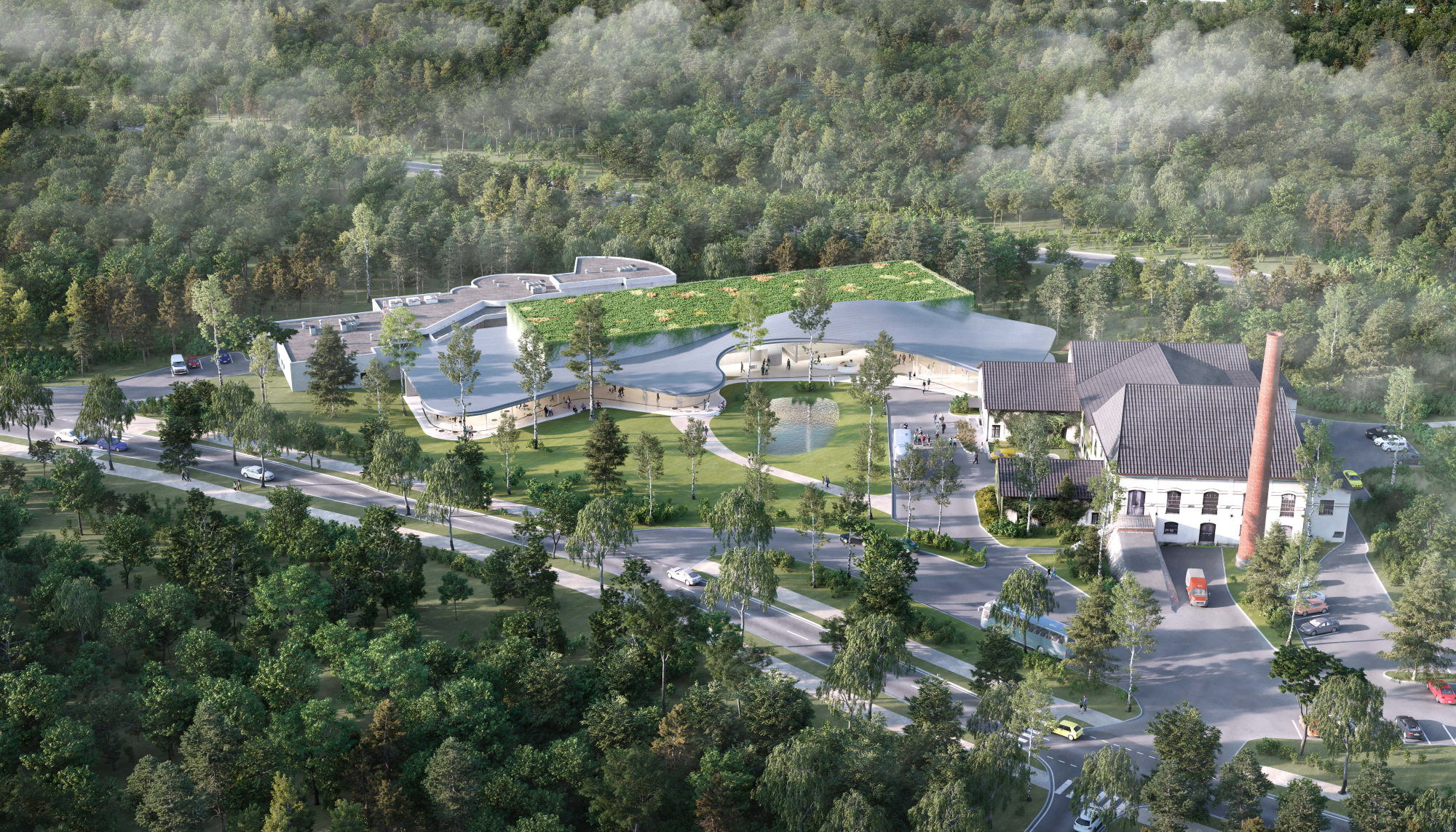Name
Museum of Wilderness and Nature Culture
Description
Proposal for renovation and newbuild
Client
Riihimäen Tilat ja kehitys Oy
Year
2021
Size br-m²
6850
The Hunting Museum of Finland and the Finnish Fishing Museum Association, with the support of the Ministry of Agriculture and Forestry, the Ministry of Education and Culture and the National Board of Antiquities, launched a project in 2020 to create a national museum combining recreational uses of nature. The City of Riihimäki participated in the application process with a proposal based on the utilization and expansion of the current Finnish Hunting Museum. The goal of the design was to naturally connect the expanded hunting museum to the Finnish Glass Museum next to it, forming a new Museum Center.
The new Museum of Wilderness and Nature Culture will be the information center for wildlife culture and national hunting history. The museum’s mission is to strengthen people’s relationship with nature and bring nature experiences within easy reach for everybody.
The architecture of the proposal plan coordinates three key themes: the architecture of the new building takes into account the characteristics of the plot and its old buildings, it opens directly to the surrounding nature and has a strong image value – the new museum must be an attraction in itself.
The old factory building of the Glass Museum forms the iconic entrance to the museum site. The extension adds a new kind of aesthetics to the old museum site based on openness and functionality. The goal of the new building is to create an equal counterpart for the Glass Museum and addressing the challenges of modern museum design.
The Finnish Glass Museum is a nationally significant building. The former factory building was renovated for the use of the Finnish Glass Museum in 1981. The renovation was designed by designer and sculptor Tapio Wirkkala. The museum is Tapio Wirkkala’s only existing comprehensive space plan.
The Hunting Museum of Finland, completed in 1989, is designed by professor Osmo Lappo and architect Juhani Westerholm.
The ensemble of the two existing national museums is a local tourist destination and the already well-established flow of visitors provide a good basis for the further development of the museum site.


